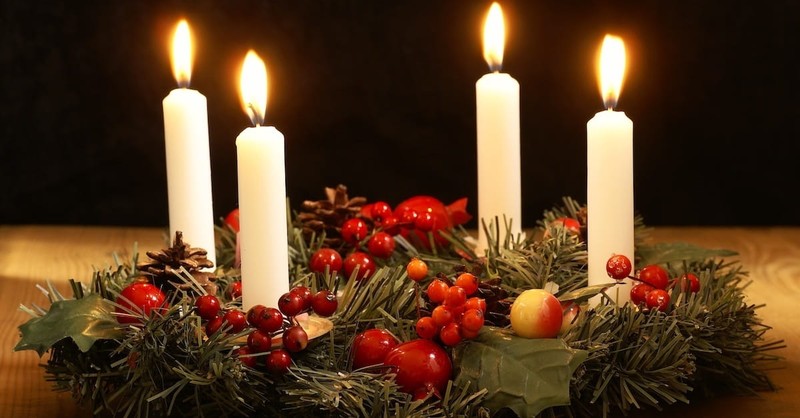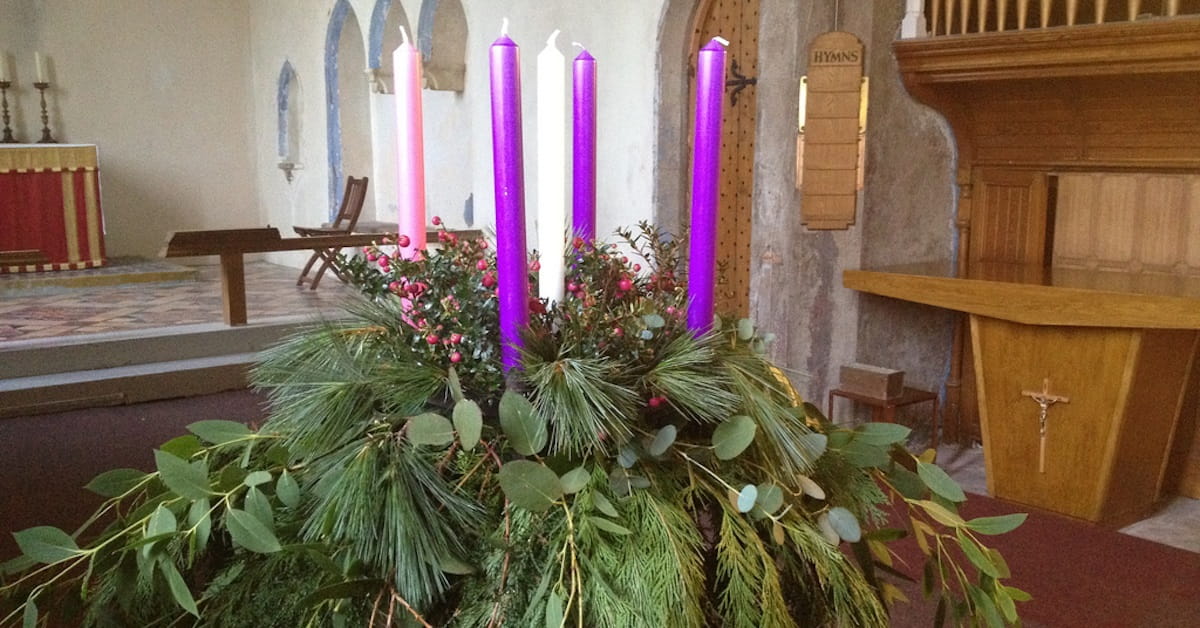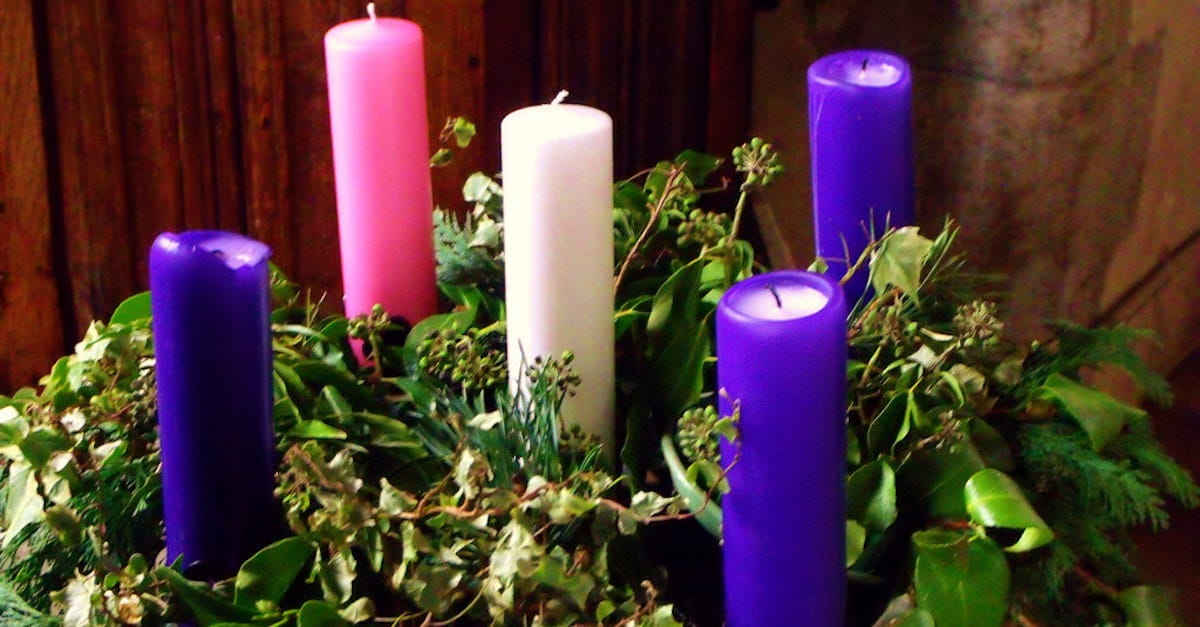
Pope Francis today welcomed the Advent season with a reminder for the faithful around the world that it is a time of “expectation and hope”.
His remarks came in his commentary before praying the noonday Angelus with the pandemic-limited crowd of pilgrims in St. Peter’s Square.
“Today’s liturgy invites us to live the first ‘important Season’, which is that of Advent, the first of the liturgical year, Advent, which prepares us for Christmas, and therefore it is a time of expectation and a time of hope. Expectation and hope,” Pope Francis said. “Advent is a continuous call to hope: it reminds us that God is present in history to lead it to its ultimate goal and to lead us to its fullness, which is the Lord, the Lord Jesus Christ.”
Following is the Holy Father’s full commentary, provided by the Vatican:
Dear brothers and sisters, good afternoon!
Today, the First Sunday of Advent, a new liturgical year begins. In it, the Church marks the passage of time with the celebration of the main events in the life of Jesus and the story of salvation. In so doing, as Mother, she illuminates the path of our existence, supports us in our daily occupations, and guides us towards the final encounter with Christ. Today’s liturgy invites us to live the first “important Season”, which is that of Advent, the first of the liturgical year, Advent, which prepares us for Christmas, and therefore it is a time of expectation and a time of hope. Expectation and hope.
Saint Paul (see 1 Cor 1:3-9) indicates the object of our expectation. What is it? The “manifestation of the Lord” (v. 7). The Apostle invites the Christians of Corinth, and we too, to focus our attention on the encounter with Jesus. For a Christian the most important thing is the continuous encounter with the Lord, being with the Lord. And in this way, accustomed to staying with the Lord of life, we prepare ourselves for the encounter, for being with the Lord for eternity. And this definitive encounter will come at the end of the world. But the Lord comes every day, so that, with His grace, we might accomplish good in our own lives and in the lives of others. Our God is a God-who-comes, do not forget this: God is a God who comes, who continually comes. Our waiting will not be disappointed by Him! The Lord never disappoints. He will perhaps make us wait, He will make us wait a few moments in the dark to allow our expectation to ripen, but He never disappoints. The Lord always comes, He is always by our side. At times He does not make Himself seen, but He always comes. He came at a precise moment in history and became man to take on our sins – the feast of the Nativity commemorates Jesus’ first coming in the historical moment -; He will come at the end of times as universal judge; He comes every day to visit His people, to visit every man and woman who receives Him in the Word, in the Sacraments, in their brothers and sisters. Jesus, the Bible tells us, is at the door and knocks. Every day. He is at the door of our heart. He knocks. Do you know how to listen to the Lord who knocks, who has come today to visit you, who knocks at your heart restlessly, with an idea, with inspiration? He came to Bethlehem, He will come at the end of the world, but every day He comes to us. Be careful, look at what you feel in your heart when the Lord knocks.
We are well aware that life is made up of highs and lows, of lights and shadows. Each one of us experiences moments of disappointment, of failure, and being lost. Moreover, the situation we are living in, marked by the pandemic, generates worry, fear, and discouragement in many people; we run the risk of falling into pessimism, the risk of falling into closure and apathy. How should we react in the face of all this? Today’s Psalm suggests: “Our soul waits for the Lord: he is our help and our shield. Our heart is glad in him, because we trust in his holy name” (Ps 33:20-21). That is, the soul awaiting, confidently waiting for the Lord, allows us to find comfort and courage in the dark moments of our lives. And what gives rise to this courage and this trustful pledge? Where do they come from? They are born of hope. And hope does not disappoint, that virtue that leads us ahead, looking at the encounter with the Lord.
Advent is a continuous call to hope: it reminds us that God is present in history to lead it to its ultimate goal and to lead us to its fullness, which is the Lord, the Lord Jesus Christ. God is present in the history of humanity, He is the “God-with-us”, God is not distant, He is always with us, to the extent that very often He knocks on the door of our heart. God walks beside us to support us. The Lord does not abandon us; He accompanies us through the events of our lives to help us discover the meaning of the journey the meaning of everyday life, to give us courage when we are under duress or when we suffer. In the midst of life’s storms, God always extends His hand to us and frees us from threats. This is beautiful! In the book of Deuteronomy, there is a very beautiful passage, in which the Prophet says to the people: “For what great nation is there that has a god so near to it as the Lord our God is to us?” No-one, only we have this grace of having God close to us. We await God, we hope that He manifests Himself, but He too hopes that we manifest ourselves to Him!
May Mary Most Holy, the woman of expectation, accompany our steps at the beginning of this new liturgical year and help us to fulfill the task of Jesus’ disciples, indicated by the Apostle Peter. And what is this task? To account for the hope that is in us (see 1 Pet 3:15).
After the Angelus, the Holy Father continued:
Dear brothers and sisters,
I would like to express my closeness to the people of Central America, hit by strong hurricanes. In particular, I recall the Island of San Andrés, Providencia, and Santa Catalina, as well as the Pacific coast of the north of Colombia. I pray for all the countries who are suffering as a result of these disasters.
I renew my warm greeting to you, the faithful of Rome, and pilgrims from various countries. In particular, I greet those who, unfortunately in very limited numbers, have come on the occasion of the creation of the new Cardinals, which took place yesterday afternoon. Let us pray for the thirteen new members of the College of Cardinals.
I wish all of you a blessed Sunday and a blessed Advent journey. Let us try to try to bring out the good even from the difficult situation that the pandemic imposes upon us: greater sobriety, discreet and respectful to others who may be in need, some prayer also within the family, with simplicity. These three things will help us greatly: greater sobriety, discreet and respectful to others who may be in need, and, very importantly, some moments of prayer also within the family, with simplicity. Please, do not forget to pray for me. Enjoy your lunch, and arrivederci.


 lives.
lives. Bishop Felipe Arizmendi Esquivel, Bishop emeritus of San Cristóbal de las Casas, Mexico; Archbishop Silvano M. Tomasi, titular Archbishop of Asolo, Apostolic Nuncio; Fra Raniero Cantalamessa, Capuchin, Preacher of the Papal Household; Msgr Enrico Feroci, parish priest of Holy Mary of the Divine Love in Castel di Leva.
Bishop Felipe Arizmendi Esquivel, Bishop emeritus of San Cristóbal de las Casas, Mexico; Archbishop Silvano M. Tomasi, titular Archbishop of Asolo, Apostolic Nuncio; Fra Raniero Cantalamessa, Capuchin, Preacher of the Papal Household; Msgr Enrico Feroci, parish priest of Holy Mary of the Divine Love in Castel di Leva.




